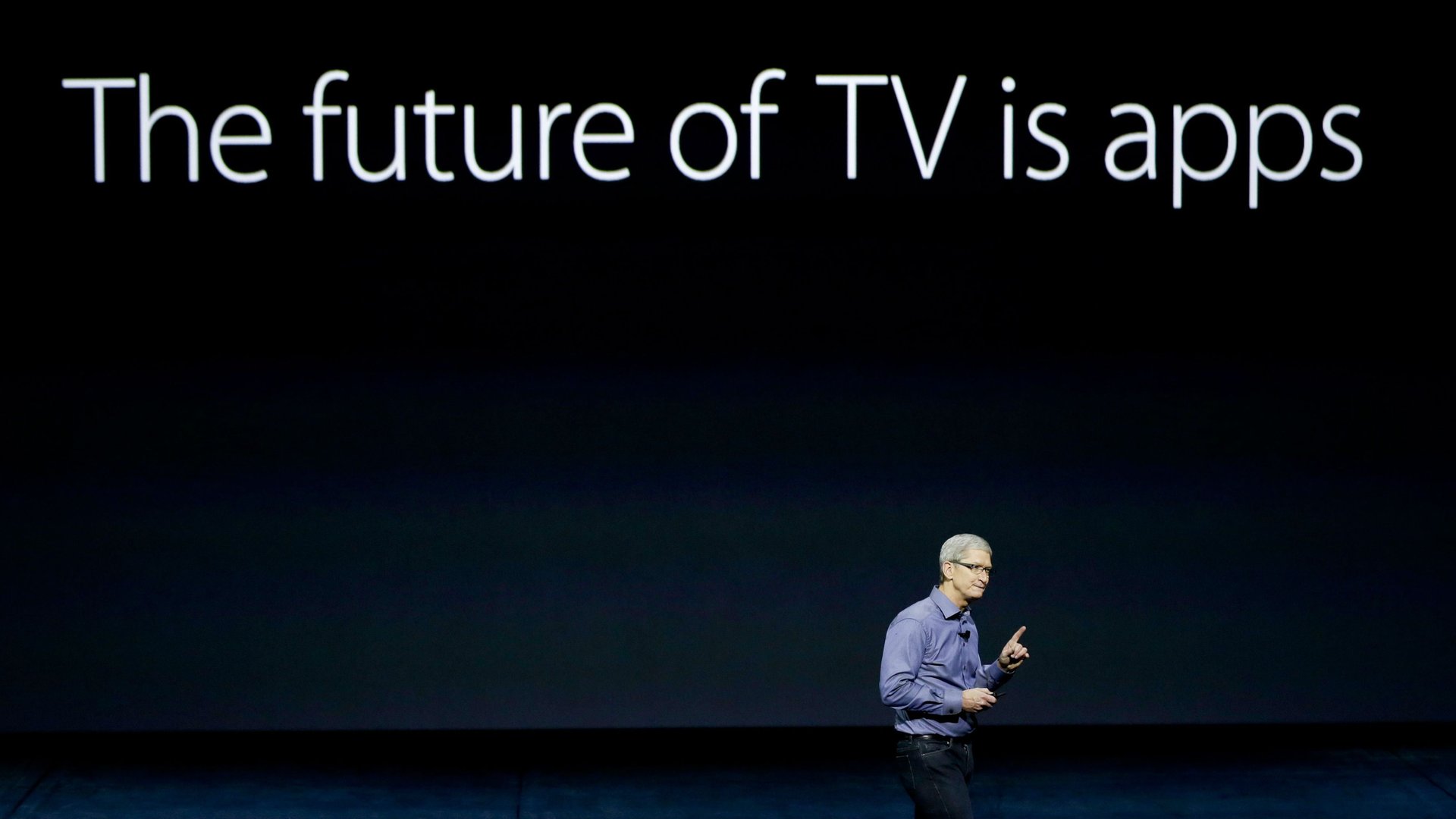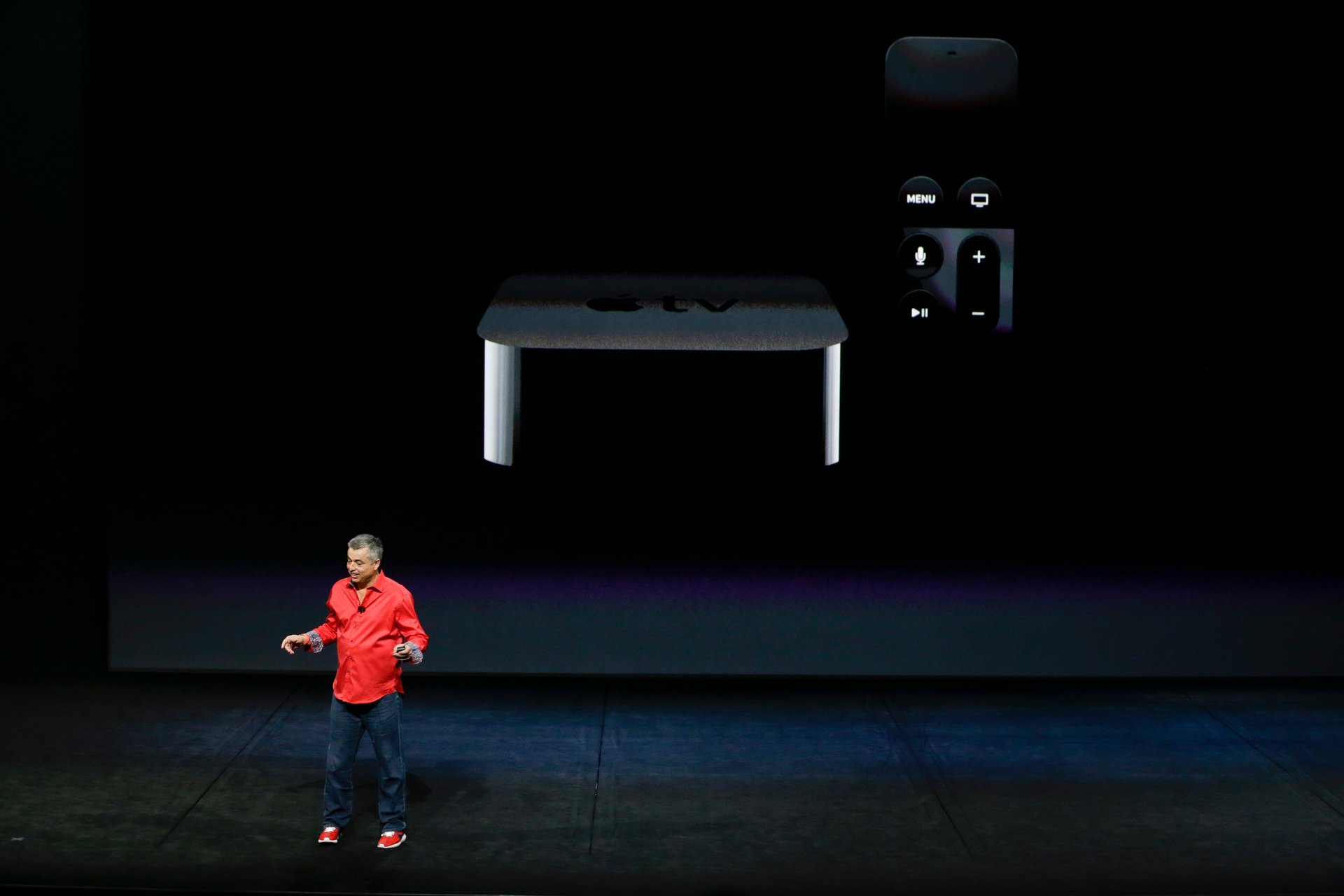The new Apple TV is a long-delayed, much-needed refresh
Twenty-two years after it launched its first TV product, Apple officially announced the new Apple TV—the first truly significant upgrade to the media player in years.


Twenty-two years after it launched its first TV product, Apple officially announced the new Apple TV—the first truly significant upgrade to the media player in years.
“Our vision for TV is simple and perhaps a little provocative,” Apple CEO Tim Cook said at the company’s hallmark event Sept. 9. ”The future of television is apps.”
Cook said the TV-watching experience hasn’t changed much in decades. That’s demonstrably untrue, and he surely knows it. But by saying that, Cook is trying to position the new Apple TV as the most innovative media player ever built. While it does offer some cool, Apple-esque refinements, the device is more of a catch-up to competitors than anything else.
Here are the Apple TV’s new features (many of which were first reported by BuzzFeed):
- An App Store. For the first time, the Apple TV will have an App Store and be open to third-party developers to experiment with. Some developers were given early access, perhaps most notably Major League Baseball. The new MLB.tv app on the Apple TV allows users to watch multiple games simultaneously in split-screen, view stats, receive alerts about game events (like who’s up to bat), among other features. That app should be ready to go immediately, while a similar app for the NHL will roll out next month.
- Universal voice search. Apple TV users can now search across all of their apps for specific movies or shows. For instance, if you say, “I want to watch Game of Thrones,” it’ll show all your apps that offer Game of Thrones. Cool, right? Roku and Amazon Fire TV both already have this feature (even Comcast’s X1 cable box has a similar function), though Amazon doesn’t index Netflix when searching across platforms. Apple TV now does. That said, at least at first, it appears the interface will give iTunes preferential treatment over third-party apps, in terms of screen real estate.
- Siri integration. The Apple TV’s most promising new feature is how it seamlessly integrates the Apple personal assistant, Siri, into the experience. If you ask Siri, “What did she say?”, your video will rewind 15 seconds and play again with subtitles (this feature should be popular in Apple’s coveted 65-and-older demographic). You can also ask Siri questions like, “Who stars in this?”, and a box will appear at the bottom of your screen with a list of your movie or show’s stars, without interrupting the video. Should you want more information, you can swipe up, and your video will automatically pause. The options here are limitless: It works for checking the weather, sports scores, you name it.
- A “revolutionary” new remote. The Apple TV was in dire need of a new remote control, and it got one. The remote includes a glass touch surface on top, Bluetooth, volume control, and can last three months on each charge (using the Apple lightning cable). The remote will be particularly useful for…
- Games. Lots of games. Gaming is clearly an emphasis with this new Apple TV. For many games, users can use either the new remote or their iPhones or iPods. Apple’s game library will expand considerably, integrating some popular iOS games and others that could previously only be found on gaming consoles, such as Guitar Hero. There’s also a new fitness app that works with the Apple Watch. (That was the only mention of Apple Watch integration, though that could change in the future.)
- A brand new, TV-specific operating system. The Apple TV will run on “tvOS,” an operating system based on iOS designed specifically for the new device. Cook touts that it will be familiar and easy to use for developers.
- A cleaner, crisper user interface.
- Hi-def video screensavers.
When it’s released in late October, the new Apple TV will cost $149 for the 32 GB version (over twice as much as the current model), and $199 for 64 GB. Ultimately, this was a very necessary upgrade of the device, but not a groundbreaking one. For a company with as much brand power and popularity as Apple, that might be enough for it to win the streaming media box market.
Noticeably absent from the unveiling, as we’ve known it would be for months, was Apple’s long-rumored subscription TV service. Apple has apparently had trouble locking down agreements with several networks, which has forced the company to delay the project. If and when that service debuts, it likely won’t be groundbreaking either, though it may prove to be a more popular and comprehensive alternative to services like Sling TV or PlayStation Vue.
Apple has yet to revolutionize TV the way it did music. But now, Apple can boast that it is very much part of the future of TV, rather than the thing that’s bringing about that future.
